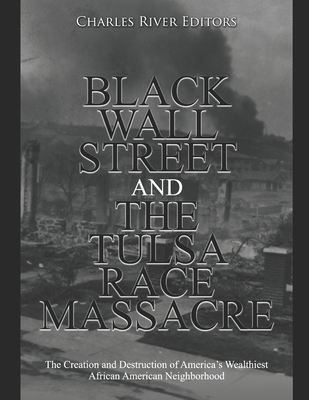Black Wall Street and the Tulsa Race Massacre: The Creation and Destruction of America’s Wealthiest African American Neighborhood
Description of Black Wall Street and the Tulsa Race Massacre: The Creation and Destruction of America’s Wealthiest African American Neighborhood
*Includes pictures
*Includes excerpts of contemporary accounts
In the wake of the Civil War, African Americans attained freedom from chattel slavery, but continued to suffer discrimination both legal in the form of Jim Crow laws and de facto in the continued perception among the vast majority of white Americans that African Americans were at the very least inferior and at the most a constant dangerous presence in their communities who must be carefully controlled. In this way, Tulsa was no different than most cities in the region in the 1920s.
Overall, Tulsa in 1921 was considered a modern, vibrant city. What had fueled this remarkable growth was oil, specifically the discovery of the Glenn Pool oil field in 1905. Within five years, Tulsa had grown from a rural crossroads town in the former Indian Territory into a boomtown with more than 10,000 citizens, and as word spread of the fortunes that could be made in Tulsa, people of all races poured into the city. By 1920, the greater Tulsa area boasted a population of over 100,000.
In turn, Tulsa’s residential neighborhoods were some of the most modern and stylish in the country, and the Tulsa Chamber of Commerce produced postcards and literature boasting of the virtues of life in their modern oil city.
The Greenwood district, a 36 square block section of northern Tulsa, was considered the wealthiest African American neighborhood in the country, called the "Black Wall Street" because of the large number of affluent and professional residents. In the 2001 final report of the Oklahoma Commission to Study the Tulsa Race Riot of 1921, historians John Hope Franklin and Scott Ellsworth described the Greenwood area that would be all but destroyed in one of America’s most notorious riots.
The death knell for Black Wall Street began on Memorial Day, May 31, 1921. Around or after 4:00 p.m. that day, a clerk at Renberg’s clothing store on the first floor of the Drexel Building in Tulsa heard a woman scream. Turning in the direction of the scream, he saw a young black man running from the building. Going to the elevator, the clerk found the white elevator operator, 17-year-old Sarah Page, crying and distraught. The clerk concluded that she had been assaulted by the black man he saw running a few moments earlier and called the police.
Those facts are just about the only things people agree on when it comes to the riot in Tulsa in 1921. By the time the unrest ended, an unknown number of Tulsa’s black citizens were dead, over 800 people were injured, and what had been the wealthiest black community in the United States had been laid to waste.
In the days after the riot, a group formed to work on rebuilding the Greenwood neighborhood, which had been all but destroyed. The former mayor of Tulsa, Judge J. Martin, declared, "Tulsa can only redeem herself from the country-wide shame and humiliation into which she is today plunged by complete restitution and rehabilitation of the destroyed black belt. The rest of the United States must know that the real citizenship of Tulsa weeps at this unspeakable crime and will make good the damage, so far as it can be done, to the last penny."
However, financial assistance would be slow in coming, a jury would find that black mobs were responsible for the damage, and not a single person was ever convicted as a result of the riot. Indeed, given that racist violence directed at blacks was the norm in the Jim Crow South, and accusations of black teens or adults violating young white girls were often accepted without evidence, people barely batted an eye at the damage wrought by the riot. It would not be until recently that a true accounting of the riot and its damage have been conducted, and as the 100th anniversary of the massacre approaches in 2021, the city of Tulsa is still working to complete the historical record.
Black Wall Street and the Tulsa Race Massacre: The Creation and Destruction of America’s Wealthiest African American Neighborhood is categorized under the following categories. You can browse these categories to find other titles filed in the same way:

